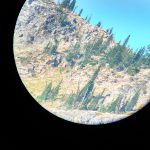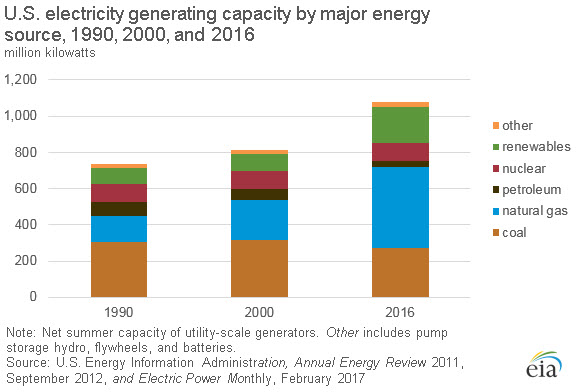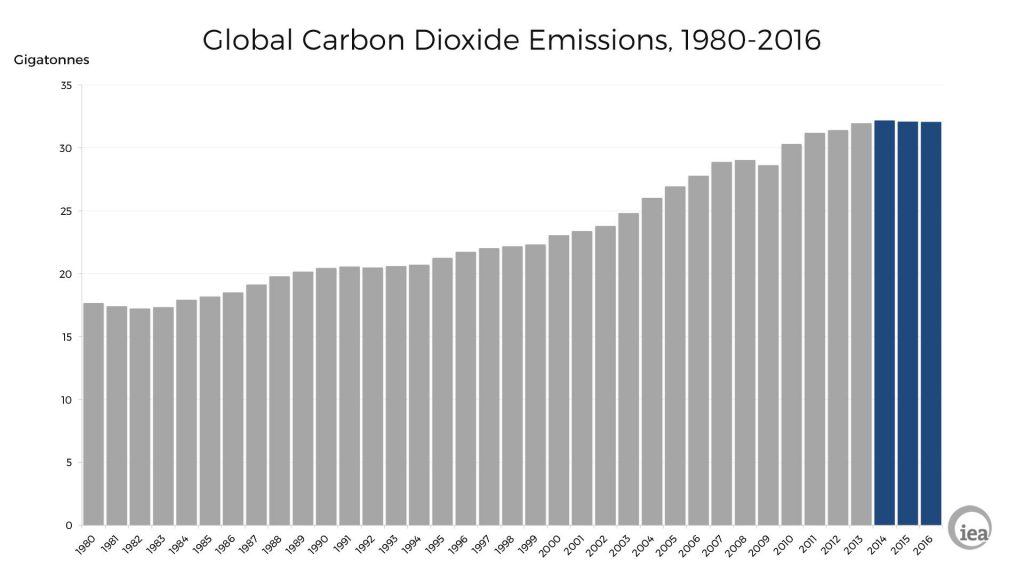Please read this article for interesting developments in the value of this natural resource.
Washington state takes bold step to restrict companies from bottling local water
Did you notice that what Montana is doing has had a world-wide impact? Thank you to all the Flathead Valley residents who have worked so hard to protect our water!
There is so much more to explore about the topic of food resources!
Check out: Unbroken Ground or The Fish on My Plate to learn more about sustainable changes that are revolutionizing how food is grown and harvested.
Use this interactive map to see your carbon footprint.
Global climate change is no longer an abstract concept. Listen to Threshold: Season Two podcasts as they explore the effects in the Arctic.
Hello active readers of the ESS Blog!
As this week’s guest blogger, I will be tackling the issue of pollution–but not just any kind of pollution. As we know, pollution comes in many shapes and sizes; it may come as a surprise that light –yes, light– is becoming an ever-increasing problem.
Our world is constantly lit up. Street lights illuminate cul-de-sacs of sleeping people and neon signs shine advertisements on empty streets. Exterior lights have become so bright and so abundant it is seems as if the sun never sets…maybe that was a slight exaggeration. We are part a society that has forgotten how to live in darkness. There is an ever-present need for light. Nothing is to be left in the dark (Light Pollution).
But this craving for light hasn’t left the world unscathed.
Have you ever looked up at the sky only wanting to gaze at the stars, but, much to your dismay, the stars are not shining? Truth is they are shining, but something else is blocking their shimmer. Your problem might be caused by lights. With the exterior lighting we use always on full blast, night skies have turned into a hazy layer of light.
The picture below shows exactly this.
 With all the city lights, the stars vanish and in their place is a blanket of light. When the power went out in this place, the beautiful starry sky became visible. It is crazy that something so simple as light can have such an impact on Earth’s skies.
With all the city lights, the stars vanish and in their place is a blanket of light. When the power went out in this place, the beautiful starry sky became visible. It is crazy that something so simple as light can have such an impact on Earth’s skies.
But, Night skies aren’t the only victims of light pollution. Nocturnal animals thrive in dark environments. They rely on the sun to set. We as humans have turned many places into an eternal day. When the sun sets our lights flip on. Many prey animals use the darkness to hide from predators. With our lights shining spotlights on them, they no longer have this advantage (Find out More).
Our city lights can make it hard for coral on the Great Barrier Reef to determine when to spawn. They confuse our artificial lights for the full moon, releasing their reproductive cells too late. These species are very important to the reef. A similar story can be told about Zooplankton by the name of Daphnia. They are found in lakes, and during the day, they hide in the dark depths of the water. When the sun sets, they rise to the surface snacking on the algae there. Plankton are extremely important to lake ecosystems; most lake dwelling creatures indirectly or directly eat plankton. Artificial lights cause Daphnia not to rise which leads to too much algae and then algal blooms. The light we have created for our convenience is making life pretty inconvenient for many species around the world. More Ecological Effects Here.
You may have seen the poster child for light pollution: baby sea turtles. This species is the one most commonly heard of and referenced when talking about light pollution. When these cute baby turtles finally hatch from their eggs, they make the long, sandy trek to the ocean using the moon’s reflection in the water as a guide. When we turn on lights from buildings, restaurant, and even our homes, the turtles often mistake these for the moon. They travel away from the ocean and usually into the mouths of their predators.
A lesser known impact of light is its impact on humans. Just like many animals, we are awake when the sun is up and asleep when the sun sets. Artificial lights can mess with our internal clocks. In a study published by Richard G. Stevens and Yong Zhu, connections between night light and cancer were found. Although they did not ‘prove’ anything, they did find that women who work night shifts might be more susceptible to breast cancer. There was evidence that showed night time exposure to these lights had something that increased the chances of breast cancer within these women. There is still much to be explored and tested in the human realm, but the study done by Stevens and Zhu is a very good start to showing what could potentially affect us.
As I drive through my own small town at 10:30 pm, I see almost every sign lit up, yet if I wished to enter one of these stores with an illuminated sign, chances are it would be closed. The thought came to me this night, why are these lights on? The stores aren’t open, so why are their lights on? Yes, I know they say that it brings in more business, but how much more business does it really bring in? These are questions I think we should be asking ourselves.
Many types of pollution require complex cleaning processes and lots of effort on our part. With light pollution, the solution is easy: turn off the lights. It really is as simple as that. When the lights go off, the night skies come back, animal and human sleep schedules go back to normal, turtles find the ocean, and plankton feast on algae. All we have to do is literally flip a switch.
 There are many national parks all around the world who are committed to preserving their dark skies. I am blessed to live in such a beautiful place with Glacier National Park practically in my backyard. Wanting to preserve the dark skies for nocturnal animals and human amazement, Glacier and Waterton Lakes National Parks have become an International Dark Sky Park. This means certain requirements must be met regarding lighting within the park. Now the night sky can be part of your viewing experience. How amazing is that? There are many opportunities to check out the park in the dark. Instead of looking at an artificial haze of light in town, you could look at the Milky Way Galaxy from Logan Pass. To participate or just learn more, check out this website.
There are many national parks all around the world who are committed to preserving their dark skies. I am blessed to live in such a beautiful place with Glacier National Park practically in my backyard. Wanting to preserve the dark skies for nocturnal animals and human amazement, Glacier and Waterton Lakes National Parks have become an International Dark Sky Park. This means certain requirements must be met regarding lighting within the park. Now the night sky can be part of your viewing experience. How amazing is that? There are many opportunities to check out the park in the dark. Instead of looking at an artificial haze of light in town, you could look at the Milky Way Galaxy from Logan Pass. To participate or just learn more, check out this website.
I know that we need some lights out there, but there are ways to better manage the lights we turn on. Many street lights and exterior lights that are meant to illuminate certain things actually end up shining on a lot more territory. These lights are touching more than we thought. If only there was a way to direct where the light was shining…oh, wait, there is! The answer comes in the form of shielded light covers. Shielded light covers point the light so it shines directly down where you want it. It reduces the amount of excess, wasted light. This is a simple fix. Outdoor Lighting Basics, visit the site to find out more!
Businesses can turn off their outdoor signs when they are closed, and people can turn off their house lights when they go to bed. Using lights with motion sensors or a timer reduces the time light is exposed outside.
Fixing light pollution is as simple as turning off a light. There are so many ways that everyone can help reduce and avoid this problem. We have the chance to recognize a problem we have caused and act on it. That’s pretty amazing.
Although this isn’t a huge problem in the place I live, I still love gazing at the stars. I love clear nights. I love the night skies. I want them to always be there. I don’t want light to pollute my night skies. If we raise awareness now, we can change the way we look at outdoor lighting.
I hope you have learned something useful in today’s blog. Everything we do can have an impact on the Earth. I think it was time we weren’t scared of the dark…
Find this issue interesting? Want to share the message with others? Show them this video about light pollution.
Check out the new ad campaign by Toyota here
Here are wonderful websites to help you generate global context for the current status of the pedosphere:
http://www.cals.uidaho.edu/soilorders/
http://eu.montana.edu/climb/docs/CLIMB-7SoilProfiles.pdf
http://www.fao.org/3/a-i6478e.pdf
On a gorgeous, sunny Tuesday in September, wildlife biology students participated in Glacier National Park’s citizen science program by completing goat and bighorn sheep ground surveys near Marias Pass.
While no goats were observed, students did an excellent job locating several bighorn sheep.
Can you find the ram in this spotting scope photo?
 The research is in! Read all about the effects on agriculture, forests, and water resources here
The research is in! Read all about the effects on agriculture, forests, and water resources here
Welcome to Environmental Systems and Societies (IB)!
What a daunting task: writing the first blog post of the school year (and my first EVER!). After much careful consideration, I would like to share my optimism with you.
The ecology of the natural world is beautiful and inspires wonder. It is complex, resilient, and dynamic. Its value has yet to be fully understood or appreciated by humans. In this class, students will first learn about how healthy ecosystems function. As the course progresses, students will focus on some of the challenges today’s ecosystems face. It is easy to become overwhelmed by the variety and magnitude of these issues.
However, in each and every topic covered, ESS explores how problems in ecosystems can be remediated from a variety of environmental perspectives, emphasizing dialogue between stakeholders, in order to create positive sustainable change.
The actions of each individual do matter. Simple choices like what a person eats, how often s/he turns off the lights, and which container s/he drinks from, have a cascade of effects- some short term, others lasting centuries. Taken collectively, small changes made by each person (multiplied by 7, 500,000,000!) have an enormous impact on the biosphere.
Positive changes (just the tip of the iceberg, really, but these eclectic examples match some of our first semester topics)
Land: In Montana, changes are already in progress. Rancher, Farmer, Fisherman by Miriam Horn details how one individual is creating habitat for wildlife, improving soil composition, increasing plant biodiversity, all while raising cattle on the prairie. Interested in learning more? It’s a great choice for this semester’s book club.
Air: In the United States, people use a lot of energy, but its sources are changing. Here’s the good news:
Reductions have been made in the use of coal and petroleum, and renewable sources have increased. These efforts and the work of other nations has resulted in a global cap on carbon emissions.
Source: International Energy Agency
Humans have managed to stabilize the carbon dioxide emissions for the last three years! Through education, collaboration, and changes in policy and personal and corporate practices, a reduction is just around the corner.
Water: Oceans are a resource shared by all countries, and plastics cause significant damage to this vast ecosystem. The creativity and determination of one young man has found a way to greatly diminish the Great Pacific Garbage Patch. To read more about his endeavors, visit www.theoceancleanup.com. In addition, PK CLEAN has found ways to recycle plastic before it even enters the ocean and turn it into petroleum.
The first steps have been taken in the journey to address the earth’s ecological challenges. It is a long process, but I believe, we’re on our way. In the midst of this hard work, it is important to remember the advice of one of my favorite writers, Edward Abbey.
“It is not enough to fight for the land; it is even more important to enjoy it. While you can. While it’s still here. So get out there and hunt and fish and mess around with your friends, ramble out yonder and explore the forests, climb the mountains, bag the peaks, run the rivers, breathe deep of that yet sweet and lucid air, sit quietly for a while and contemplate the precious stillness, the lovely, mysterious, and awesome space.”
I hope you enjoy our exciting ecological explorations this year!


